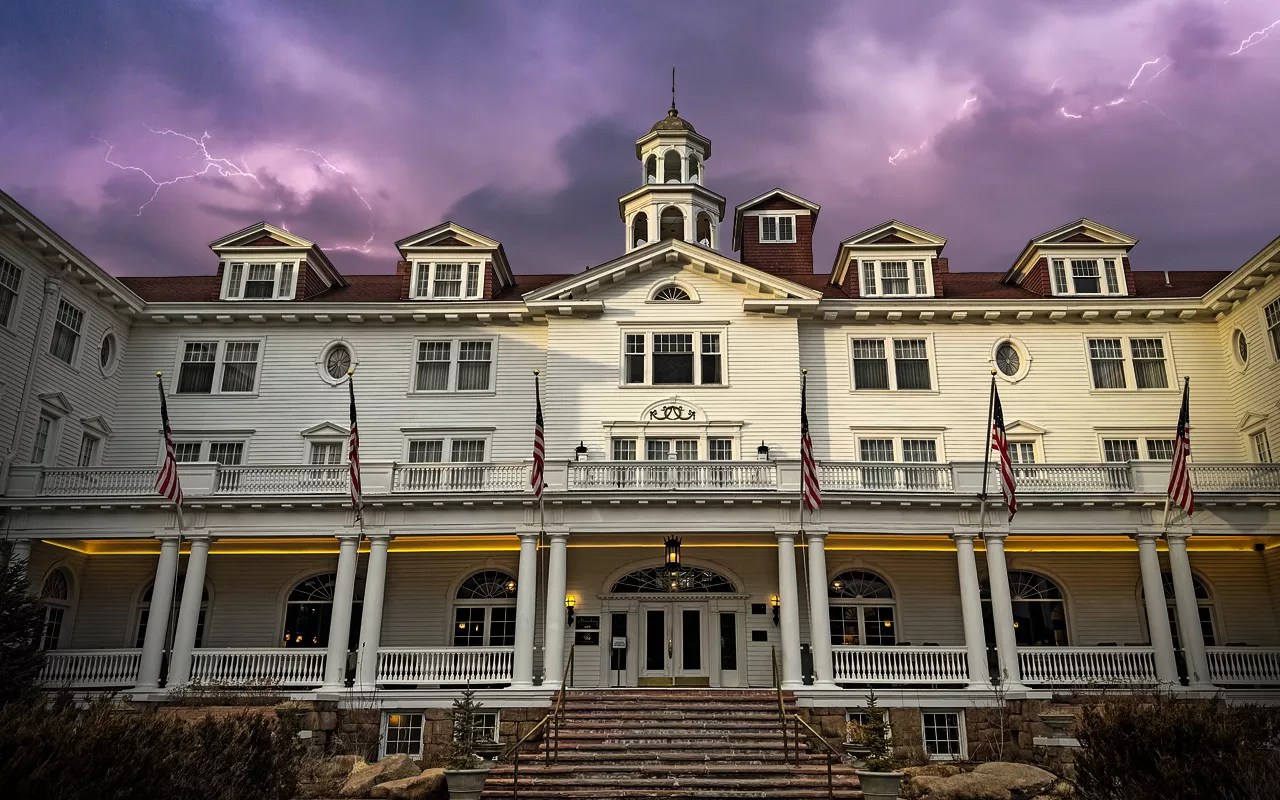
Katrina Leibee

Audio By Carbonatix
When John Cullen first walked into the Stanley hotel 28 years ago, eleven of the fourteen buildings on the Estes Park property were condemned, and in six he could see straight to the sky through holes in their roofs.
“My team actually called it ‘indoor camping,’ the condition of the hotel was so bad,” Cullen recalls.
Since then, he’s rehabilitated the property, pouring his time and money into preserving one of America’s most famous hotels. He recently spent $12 million to have all of the electrical wiring replaced and installed handmade Italian marble in the bathrooms – cut just the way the hotel’s first owner would have commissioned 115 years ago.
“I actually hired painters to make it look old,” Cullen says. “So even if I put up a new piece of wood, I would take tire chains and beat it up some to make sure that it actually doesn’t look like a brand-new hotel.”
He jokes that Stanley regulars would get upset if something suddenly looked new, saying that his customers care about every tiny detail. Everywhere he goes, he says, he meets someone who has a story about the hotel that has occupied so many of his 61 years.
Although Cullen founded the Grand Heritage Hotel Group, which manages or owns over twenty luxury hotels and resorts around the world, the Stanley has always been his favorite, and the one he’s given the most time and money to since buying it out of bankruptcy court for $3.14 million in 1995. He runs his international company from his home less than a five-minute drive from the hotel.

John Cullen, owner of the Stanley hotel, lives just behind the historic property.
Katrina Leibee
“There’s an aura and a sense of place that is really unique about the Stanley,” he says. “It has always drained my wallet, but it’s given back in threefold, tenfold, and they’re never going to build another Stanley.”
Cullen is now taking steps to preserve the Stanley’s legacy even further: He’s selling the hotel to an Arizona-based nonprofit that will invest in more renovations and projects around the campus surrounding the hotel, which now includes the International Cryonics Museum and will soon be home to the Stanley Film Center.
Here’s Johnny!
The Stanley has come a long way since it opened in 1909.
F.O. Stanley, the hotel’s first owner, arrived in Denver in 1903, following in the footsteps of so many who came to the Centennial State to recover from tuberculosis in the clean, dry air. He and his wife, Flora, headed to Estes Park in the summer to escape the city’s heat, and eventually invested in the land at 333 East Wonderview Avenue where the Stanley sits today.
Stanley himself designed the hotel with architect T. Robert Wieger and contractor Frank Kirchoff. It has 140 rooms and large, south-facing windows that provide views of the mountains. By the time the hotel opened, he’d spent the equivalent of about 17 million modern dollars, or around $500,000 at the time.
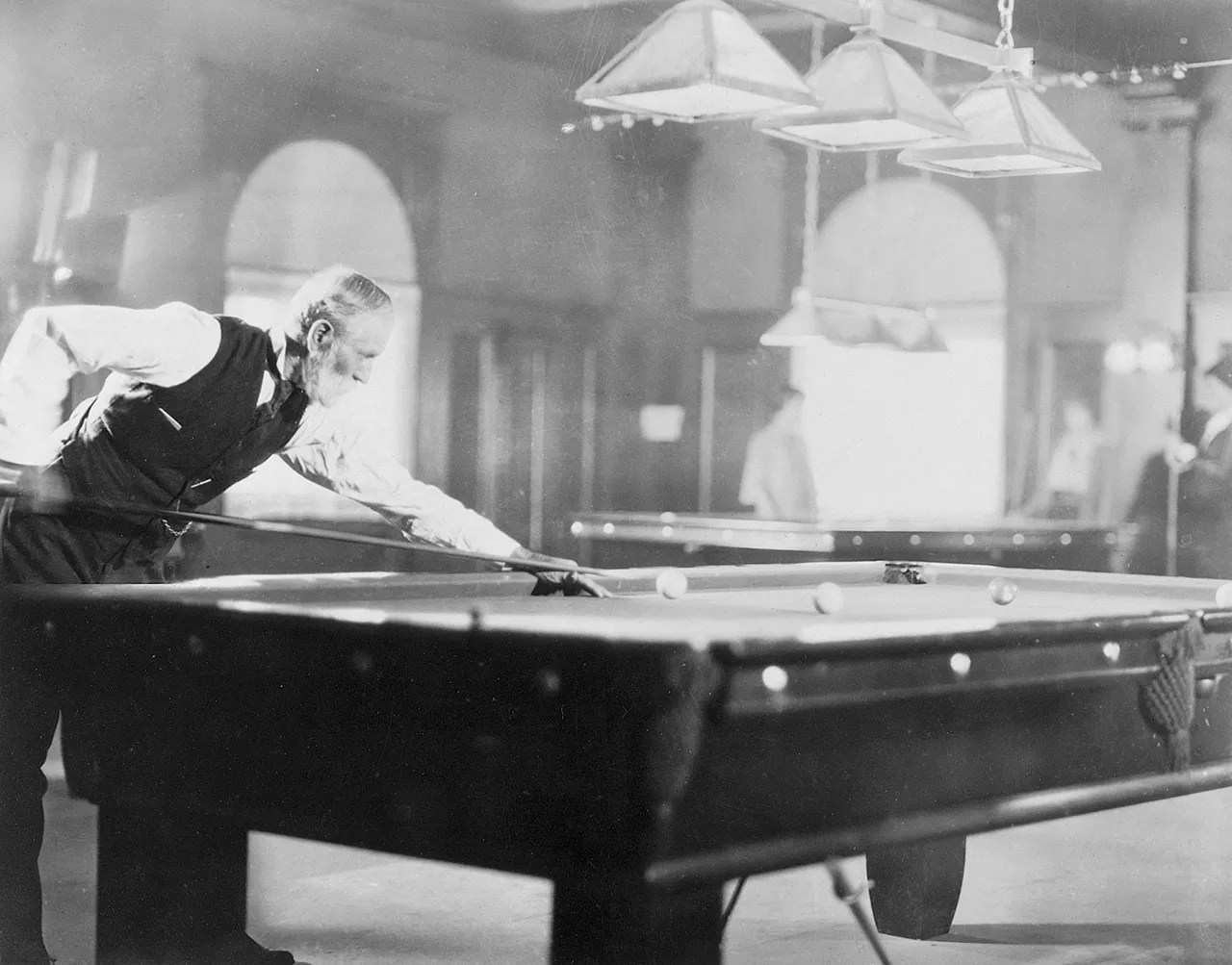
The Stanley’s many owners, including founder F.O. Stanley, have ushered it through more than a century of history.
The Stanley Museum, Kingfield, Maine
Since its opening, the hotel has changed hands many times and often struggled financially. Stanley sold the place in 1926 but then bought it back three years later in a foreclosure sale. He then sold it to Roe Emery, who owned it until 1946 before passing it to the Abbell Hotel Co.
That group owned the hotel for twenty years before selling it for $1.3 million to a group of Colorado investors headed up by Maurice L. Albertson of Fort Collins. Just three years later, Albertson and his crew sold it to Charles Hanson, Richard Holechek and Carol Hanson Pick, who would go on to sue Albertson for fraud. The hotel needed so many repairs that it didn’t open at all during the 1970 summer season.
Local businessman Frank Normali – who’d fallen in love with the place – purchased it in 1974 and got the Stanley Historic District added to the National Register of Historic Places in 1977. The designation includes the hotel as well as the Carriage House, the Manor House, Stanley Hall and eight other buildings on the property. But despite Normali’s love for the hotel, it proved difficult to maintain, falling into bankruptcy and paving the way for Cullen’s purchase of the place.
The same year Normali bought the hotel, Stephen King checked into room 217 of the Stanley, where he had a vivid dream that inspired his book The Shining. That led to the classic Stanley Kubrick film starring Jack Nicholson for which the hotel is still known today – though the movie wasn’t made there.
Even so, Cullen created a maze like the one where Nicholson meets his end in the movie on the front lawn of the hotel. The horror connection sets the Stanley apart from other hotels, he says.
King isn’t the only person to experience hauntings at the hotel. Many patrons report seeing the ghosts of F.O. and Flora Stanley around the property. In addition to action in room 217, guests report lots of ghostly activity on the fourth floor, where spirits interact with the still-living humans brave enough to try to sleep in rooms 401, 407 and 428.
Supernatural beings don’t provide the only frights that add to the fun.
When a bear wandered into the lobby in 2018, guests were thrilled instead of horrified. “It went viral that morning, and 400,000 people saw it before I tried to have it taken down,” Cullen recalls. “I was like, ‘No, don’t tell them there’s a bear in my lobby!'”
But instead of calls to cancel reservations, he got a phone call from a friend in the industry who told him that his daughters were now convinced they needed to stay at the Stanley.
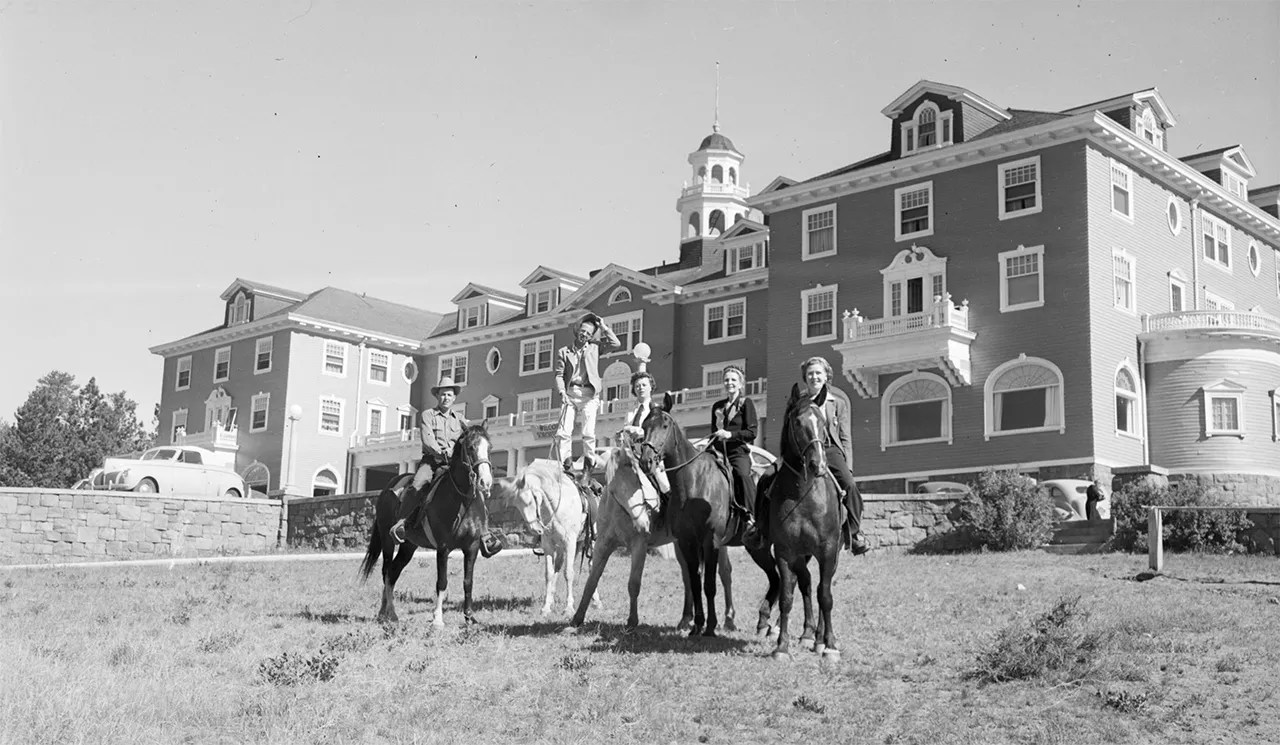
Visitors have come to the Stanley for decades to experience the West.
History Colorado/Fred P. Clatworthy
And Cullen has done plenty more to persuade people to come, spending over $30 million to add a wellness center and residential condos on the property, and also start construction of what will eventually become the Stanley Film Center, a facility with a focus on horror.
Cullen says the secret to his success has been partnering with local businesses and people rather than trying to do everything himself. The same woman has run the gift shop for 22 years, and Cullen has erected a figurative electric fence to keep hotel staffers from interfering with operations there, because she knows best.
There are currently eleven partnerships at the Stanley, such as the one between the hotel and Big Red F’s The Post Chicken & Beer, which has an outpost there. Cullen says the hotel plans to announce five more partnerships in the coming months.
“Brunch & Co., great breakfast,” he promises. “Those two families make one heck of a great breakfast. Hotel people make terrible pancakes.”
But despite knowing that he needs to step back and let people do what they do best, Cullen sometimes can’t help but take on a new project. That’s what happened with the Frozen Dead Guy Days festival, which started in Nederland in 2002.
Cullen and his partner had planned to stay at a friend’s place in Nederland for the 2023 festival, but in November 2022, his friend told them it had been canceled. It had gotten too big for the town and needed a major cash infusion.
“We had one beer, and about two beers later, on the third beer, I’m looking down and I go ‘Hmmmm,'” Cullen recalls, adding that his partner and his friend said, “‘We’ve seen that look on your face. What are you thinking?’ And I go, ‘Dudes, let’s buy the festival.'”
Cullen realized that Estes Park had the visitor infrastructure that Nederland lacked, and there was nothing organized going on in the tourism-savvy town when the festival takes place in March. Visit Estes Park, the town’s tourism group, agreed with Cullen’s reasoning. According to Claire Molle, Visit Estes Park’s communications manager, it was especially enticing to bring visitors and revenue to the town during a time when it usually wouldn’t get those benefits.
Plus, it was just a great fit.

The view of Estes Park from the historic Stanley hotel.
Katrina Leibee
“Estes Park has that small mountain charm that Frozen Dead Guy Days was born out of, but we have quite a bit more infrastructure available,” Molle says. “Also, the Stanley hotel has always been an attraction for people interested in spooky things…so Frozen Dead Guy Days, with its spooky quirkiness, really tapped into that audience.”
Cullen bought the festival before Christmas 2022. The plan was to go live just 93 days later in Estes Park; Visit Estes Park took on the task of planning and marketing much of the event.
“It was a great idea, but it was a huge risk,” Cullen says.
Ice, Ice Baby
The festival pays homage to Bredo Morstoel, lovingly called Grandpa Bredo, who was discovered cryogenically frozen in a Tuff Shed in Nederland in 1994. He’d died in Norway in 1989, but his daughter and grandson took his frozen body to California and then Nederland, in hopes of someday reviving Morstoel. Only after his grandson was deported and his daughter evicted did the town learn of Grandpa Bredo’s existence.
After that, the town sent someone to tend to him and held a festival celebrating its most famous resident every year until the pandemic. The organizers tried a comeback in 2022, but it was just too much for the town.
The move to Estes Park proved successful, with 6,600 people attending the hastily organized 2023 event that only needed 3,000 to break even, according to Cullen. He donated the proceeds from the festival’s first year to workforce housing and child care in town, both of which are important causes to Cullen.
“My concern now and fear is that we have irrational exuberance and confidence,” he admits. “They think we’re going to go somewhere between 8,000 to 10,000 this year and that’s a big number for a second-year festival. But the good news is that Visit Estes Park is not only experienced in this, but they brought in some real professional talent to make it work.”
For his part, Cullen brought the most important part of the festival to Estes Park: Grandpa Bredo. His body is now preserved at the new International Cryonics Museum that’s moved into the reportedly haunted ice house on the Stanley campus. It was created in partnership with Alcor, an Arizona nonprofit dedicated to researching how to preserve and then reanimate organs.
“It’s completely irrational,” Cullen says of the idea to move Granda Bredo and preserve him at the Stanley. “Thank God I own the Stanley myself, so I don’t have to go to my boss and ask for the $100,000 to $200,000 that was required to do all that. … I bought a festival, I gave it to the town, and it’s a really successful festival. But what happens if Grandpa thaws out, or something happens? It’s not quite the same fun festival if I don’t protect Grandpa.”
So Cullen flew to Oslo to arrange everything with the Morstoel family, then set up the partnership with Alcor.
“My first reaction was ‘No way,'” says James Arrowood, co-CEO of Alcor. “We’re a scientific research place. We’re a legitimate laboratory. … I thought this just sounds like some sort of sideshow thing. I didn’t want anything to do with it, but then John explained to me that ‘Hey, no, this space is going to be nonprofit. It’s educational.'”
Alcor had struggled to revamp its educational arm since the pandemic, so this seemed like a perfect opportunity. Now people can pay for a guided tour of the museum, see where Grandpa Bredo is stored, and learn about cryonics.
A goal of Alcor’s research is to erase the organ shortage, particularly kidneys, since disease kills about 200 people each day who can’t get a kidney on time. The hope is to revive brains and ultimately the entire body, too.
“The context of it is if you can’t do a kidney, you can’t do a brain, so you’ve got to start small and start with the basic organs and then work your way up,” Arrowood explains.
Arrowood says he thinks that the kidney problem is solvable within the next five years, and that Grandpa Bredo could actually contribute to the research. Because he was kept frozen with dry ice instead of through Alcor’s usual methods – which involve an expensive and difficult-to-make fluid that preserves enzymes and prevents cells from being crushed in the process – he presents an opportunity to study the impacts of something Alcor couldn’t ethically do to the body of one of its patients.
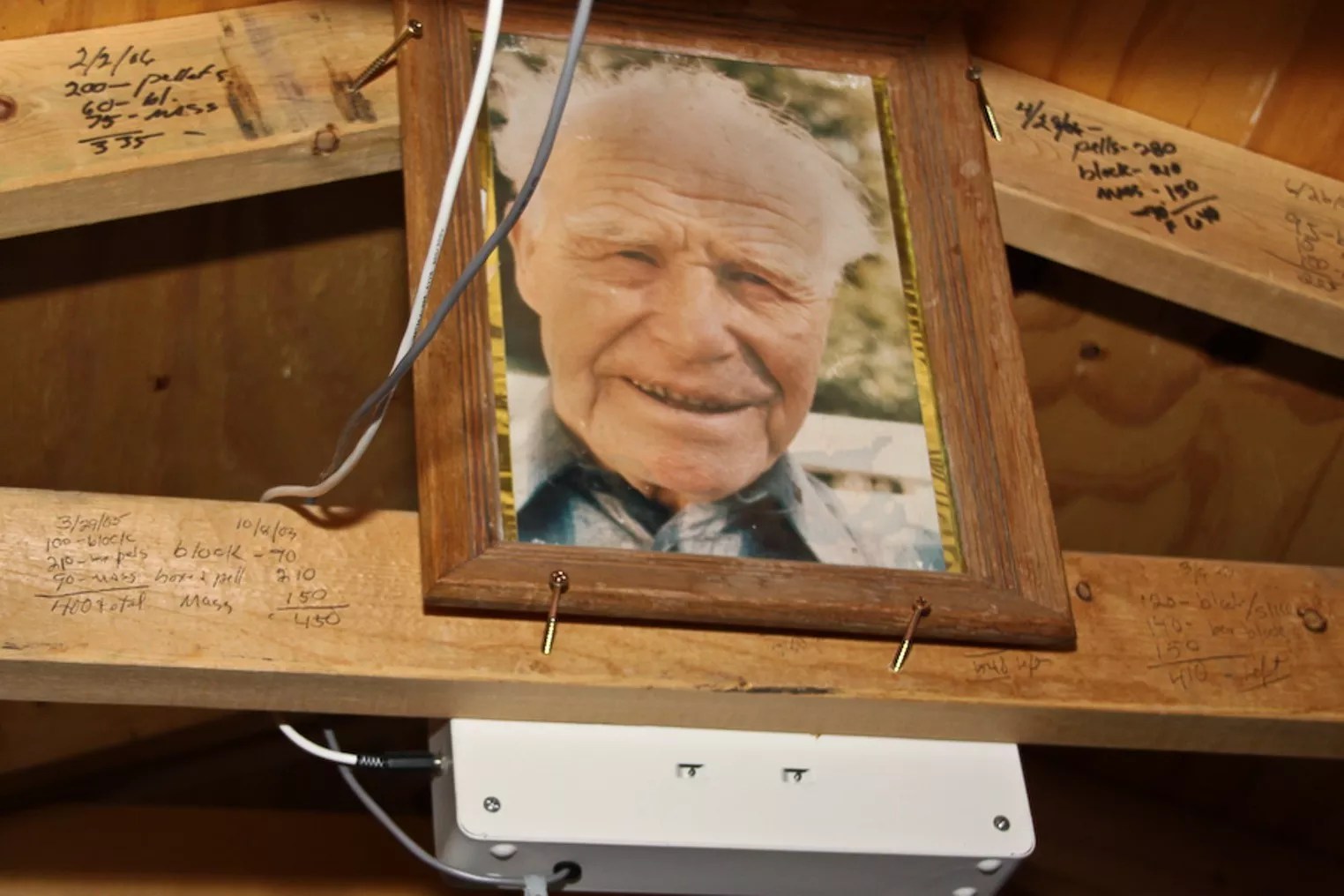
Bredo Morstoel, aka Grandpa Bredo, has been moved from a Tuff Shed in Nederland to the Stanley.
Brandon Marshall
“We were surprised at Bredo’s condition,” Arrowood says. “He was actually in very good condition compared to what he could have been.”
The Alcor team got a look at Grandpa Bredo when he was relocated in August. The nonprofit generally uses teams of nurses and former special forces operators, often Navy SEALs, to retrieve bodies across the world quickly and effectively so that they can be preserved properly. One of those teams came to Colorado to move Grandpa Bredo from Nederland to Estes Park. After careful planning, it only took about seven minutes for the team to free him from the ice and two hours to get him into his new home at the Stanley; Arrowood says having untrained people just dig him out of the ice would have taken many hours.
They plan to continue examining Grandpa Bredo remotely, possibly with a CT scan, and begin studying his organs as well. Eventually, he’ll visit Scottsdale for more extensive research.
Until then, Grandpa Bredo will be suspended in a metal Dewar container that has thermodynamic properties similar to those of a rocket engine, because it has to be cold enough inside to freeze off someone’s hand, but warm enough on the outside that it can be handled and touched by humans.
“There’s only about an inch between you and negative-320 degrees, and if you put your hand on it, your hand’s fine,” Arrowood says. “We want that young person who’s fifteen years old and in high school, going, ‘Gosh, you know, what could I do with rockets that nobody’s doing?’ Well, this is an application where you’d actually, instead of making weapons – rockets are often weapons – you could save people by creating the science behind organ donation.”
Arrowood hopes that the museum might fuel that kind of inspiration.
Alcor representatives, including one of its elite ex-Navy SEAL and nurse teams, will be at the next Frozen Dead Guy Days, set for March 14-17. While bands such as Yonder Mountain String Band and Spafford entertain the crowd, Alcor’s elite team is interested in possibly participating in or demonstrating a new addition to the weekend: coffin races.
Fright for Life
Frozen Dead Guy Days isn’t the only frightful addition to the Stanley’s lineup.
Although Cullen runs a hotel made internationally famous by a horror movie, he doesn’t like to watch such films because they get stuck in his mind. But soon the Stanley will have a space curated by horror movie production giant Blumhouse, known for movies like Halloween, The Purge, M3GAN and Get Out.
In January, Governor Jared Polis announced that Blumhouse will oversee the over 10,000-square-foot exhibit space in the Stanley Film Center, a project Cullen has been developing since 2015. It will also have a 1,200-person concert hall, an auditorium and an event center, in addition to the museum. The door-splitting ax Nicholson used in The Shining before his iconic “Here’s Johnny!” moment has already been donated to the project, and Cullen says artifacts from Get Out may be coming as well.
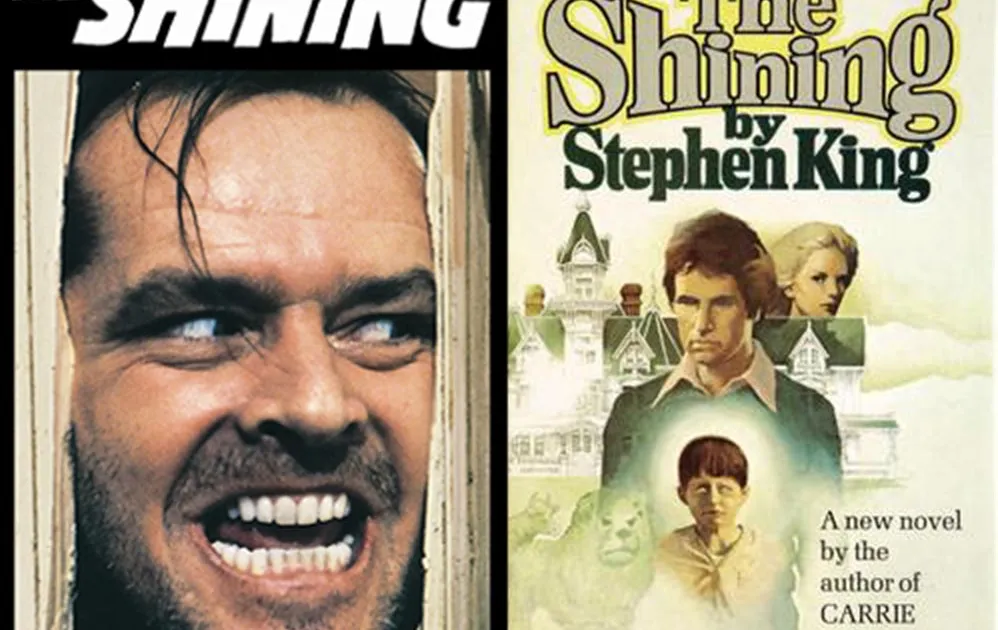
Stephen King was inspired by his stay at the Stanley, but The Shining wasn’t filmed there.
Warner Bros./Signet
The project was approved for state funding back in 2015 under Colorado’s Regional Tourism Act, which aims to attract out-of-state visitors. It originally received $12 million but struggled to raise additional capital, which stalled plans. But now the state has updated the project’s financing structure and will contribute $46 million.
Under the state’s timeline, the Stanley Film Center must be completed by November 2025. The final facility will be nearly 70,000 square feet and cost an estimated $70 million.
According to Cullen, official talks about the Blumhouse partnership started about six months ago. But Jason Blum, head of the company, had attended one of the first Stanley Film Festivals in 2015 and always loved the hotel and its history.
The festival will relaunch under Blumhouse’s guiding hand when the film center opens. In the meantime, Estes Park and the Stanley are hosting the Sundance Institute’s Directors Lab this May.
But to make the Stanley Film Center happen, Cullen still needed to find more funding, and that’s one reason he’s selling the legendary hotel in a deal that is expected to close this month.
“As part of the Stanley Film Center’s semi-annual update to the Colorado Economic Development Commission, owner John Cullen shared that the entire Stanley property and its revenues will be used as collateral and repayment for the issuance of a bond by the Colorado Educational and Cultural Facilities Authority,” the Colorado Office of Economic Development and International Trade shares. “The proceeds of the bond will be used by the Arizona-based nonprofit Community Finance Corporation to purchase the property, retire existing debt, fund the construction of the Stanley Film Center buildings.”
Up to $475 million in bonds could be issued by CECFA, which has existed since 1981 and was established by the Colorado Legislature to “provide affordable capital financing for colleges and universities,” according to its website.
Its reach has since expanded to museums, sports facilities, schools and performance spaces; since its inception, CECFA has issued over $7.6 billion in bonds.

The Stanley has 140 rooms, where guests can look out upon the mountains and Estes Park.
Katrina Leibee
Mark Heller, executive director of CECFA, had reached out to Cullen years earlier regarding the film center but says Cullen only called him recently to make the bonds a reality. Because charities can’t access the bond market directly, CECFA steps in. Bonds provide a better funding method because investors don’t have to pay income tax, and they can be paid out over a longer period of time than a traditional commercial loan.
“Mark is one of the nicest people, and I’m basically trusting him and his group with the future of the Stanley,” Cullen says.
He’s signed a 25-year management agreement to stick around, though. After that, the hotel will be under a deed restriction so that it can’t be sold to a for-profit company for fifty years. Cullen says he wanted to convert the Stanley to a nonprofit model in order to get the film center done as well as complete his vision for the hotel by redoing the lobby and adding 58 guest rooms.
He sees the sale as securing the future of what is already a cultural nexus. Additionally, profits from the hotel will now go to “Stanley grants” to fund middle school arts programs in Colorado.
“The amount of stuff that goes through us is unlike any other hotel in the world, and I consider it a great privilege,” Cullen says. “The idea that I can now donate it to the State of Colorado this way to preserve not only the legacy of what I’ve done but preserve the Stanley itself – I can’t imagine what I would feel if we did anything else. Selling it to some rich person that screws it up would be a terrible waste of my 28 years and money.”
Even though the hotel will celebrate its 115th birthday on July 4, Cullen has another anniversary on his mind that excites him even more: the thirtieth anniversary of the day he walked into the hotel, which will be a little over two years from now.
“At that point, I will have accomplished everything that I ever dreamed of here at the Stanley,” he says. “I will spend the next two years making the Stanley perfect, and I can’t think of anything better to celebrate. “